India must look beyond GDP to become a great nation
By RN Bhaskar with inputs from Sakeena Bari Sayyed
Image sourced using https://deepai.org/machine-learning-model/image-editor
India’s prime minister and his ministers have got into the constant refrain of telling people that India will become the third most important economy in the world. That may be so if one looks at gross domestic product (GDP).
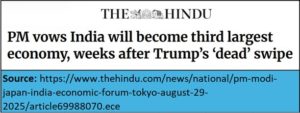 But GDP includes even the marginal output of every individual in the country. Thus, a population of 1.4 billion only multiplies this number and inflates the GDP. Thus, the GDP looks impressive, though at the individual level, the output may be marginal, not even at the subsistence level. That is why, looking at per capita GDP is more relevant than GDP alone.
But GDP includes even the marginal output of every individual in the country. Thus, a population of 1.4 billion only multiplies this number and inflates the GDP. Thus, the GDP looks impressive, though at the individual level, the output may be marginal, not even at the subsistence level. That is why, looking at per capita GDP is more relevant than GDP alone.
That is also the reason why all the tables given below have used per capita indicators and not cumulative numbers. When one does this, India’s ranking is not pretty. To get a fair picture of where India stands on the per capita scores given below, we decided to look at the five main founding members of BRICS. Moreover, in order to make the dataset more relevant, we also decided to look at four countries which are the largest in this region, and with whom India will have to grow or compete. We have deliberately excluded Singapore because it would come in the grouping of the affluent.
China cannot be excluded even though people may argue that it is not a developing country. But China is India’s next-door neighbour, and one of the founding members of BRICS. Hence, we decided not to exclude China. Moreover, there are other reasons why comparing India and China become extremely relevant.
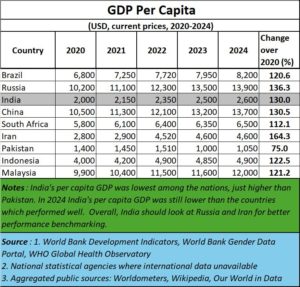 Gross domestic Product per capita
Gross domestic Product per capita
There was a time when China and India had the same level of Gross Domestic Product (GDP). In 1990 China’s GDP was just about 1.2 times that of India. China began its post-1978 reform while India remained protectionist. High taxes and high customs duties were key inhibitors that kept India backward. By 2010, China’s GDP was 3.6 time that of India. By 2022, it had grown to 5.3 times.
Today, India’s per capita GDP is the lowest among nations, just higher than Pakistan. When it comes to growth of per capita GDP, Russia and Iran offer benchmarks that India should try and match if not overtake.
Coming back to China. In 1987, India’s per capita GDP was slightly higher than China’s. It was $369 vs. China’s $348. But by 1988, China had overtaken India in per capita terms and never looked back. The key factors which helped China grow faster than India was because it focussed on industrialization, urbanization, and export-led development. India continues to falter on all these fronts even today.
So, it is time to move on and look at other indicators as well.
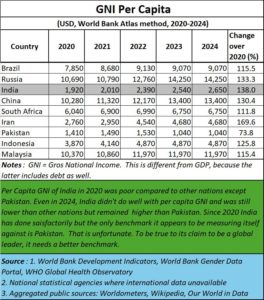 Gross National Income per capita
Gross National Income per capita
We decided to look at national income because of one simple reason. GDP includes debt. So, a country can look big even if it has borrowed much of that ostensible wealth. It is akin to a man who has borrowed money from banks and friends; he also lives an ostentatious lifestyle. Many people believe that the man is wealthy. But the accountant knows that the display is just a façade.
That is where GNI (Gross National Income) provides a better insight. It does not include Government loans, corporate debt, and foreign aid classified as loans. It provides a more realistic picture of where countries stand.
Per Capita GNI of India in 2020 was poor compared to other nations in our dataset. The only exception is Pakistan. Even in 2024, India didn’t do well with per capita GNI and was still lower than other nations but remained higher than Pakistan. Since 2020 India has done satisfactorily but the only benchmark it appears to be measuring itself against is Pakistan. That is unfortunate. To be true to its claim to be a global leader, India needs a better benchmark.
And these numbers compel us to look at other numbers – especially those that deal with human capital. After all, China and India have almost the same size of population (though China has a land mass that is almost three times that of India).
India claims it enjoys a demographic dividend. But this can turn into a demographic nightmare if human capital is not respected and nurtured. The biggest nutrient for any population is education, which in turn points to literacy. You cannot have education without first being literate. This is, perhaps, India’s biggest failing.
True, India’s literacy rate in 2020 stands at 74%. But two things must be borne in mind.
First, even at 74%, India’s literacy was lower than all countries in our dataset, except for Pakistan. Once again, the only country which India has triumphed over is Pakistan.
Second, India disguises its literacy rate by fiddling with the definition of literacy. As education experts have often pointed out, India’s definition of literate is anyone who can read and write his or her own name. Thus, if a person is called Ram, he is literate even if he knows just three alphabets. International definitions work on school levels and even comprehension levels.
That explains why India scored the second highest ranking but from the bottom in the last PISA evaluation (https://asiaconverge.com/2023/12/is-india-scared-of-the-pisa-truth/) . In 2009, India participated in the PISA exercise. Students from Himachal Pradesh and Tamil Nadu took the test. India ranked 72nd out of 73 countries, ahead of only Kyrgyzstan. After that humiliating performance, India chose not to appear for subsequent PISA exercises. Obviously, if basic schooling is flawed, PISA scores are bound to be lower.
Look at the data of government schools, which come from statements the government itself has tabled before Parliament (https://bhaskarr.substack.com/p/the-state-of-education-in-india). They tell you that India Gros Enrolment Ratio is terrible, that over a lakh government schools function in India with just one teacher for all subjects, all levels. They also reveal how just 14% of government schools are computer and internet enabled, hence known as “smart” schools. Finally, they also tell of how almost 52% of government schools don’t even have science laboratories. And yet the government spends money on them, pouring good money over bad (https://youtu.be/z3LyOnG_nEg?si=0ze7WBYqts81ptiN)?
Take the example of Bihar, one of the poorest states in India (https://www.business-standard.com/education/news/covid-lockdown-poor-infra-has-hit-bihar-govt-schools-badly-survey-123080400501_1.html). This is a state where many schools suffer poor enrolment. And what is the solution? Shut down the school. Poor mid-day meals, poor teaching, and terrible infrastructure have combined to keep enrolment low (https://frontline.thehindu.com/news/bihar-schooling-crisis-survey-report/article67157898.ece). Instead of working at improving enrolment, the state shuts down schools.
Another aspect of how India has been destroying its demographic dividend is by not providing most people with decent medical facility and healthcare. The best indicator of this malaise can be found in the total number of doctors per 1,000 people. Look at the number of medical seats for Indian doctor-aspirants, the way Indian students seek to get medical education overseas (https://youtu.be/s5a8_ML4cls?si=UNdem-2sQU9tNm7B) and the basic quality of doctors that are available in India and you begin to realise that India does not care for its people (https://bhaskarr.substack.com/p/medical-education-in-india-is-growing).
Just study the numbers. In 2020, India had 0.85 doctors per 1000 people which was poorer than other countries except Pakistan. In 2024, India’s doctor-strength grew to 0.95. But that has not been as impressive as the growth rates of either Pakistan and Indonesia. India has its work cut out on this front.
But numbers of doctors is only an indicator. This is because medical facilities comprise not only the availability of doctors but also medical insurance, hospital facilities, support staff including nurses, better treatment, affordable costs, and better-quality treatment. Just look at the amount of money people spend out of their total earnings on medicare – because government hospitals either don’t have the doctors, or the medicines, or even the credibility (https://asiaconverge.com/2018/10/aditya-birla-health-insurance-changing-contours-medical-insurance/). Observe the huge queues outside government hospitals. They are a testimony to the abject disregard for patients who are made to wait instead of offering them treatment. They point to the lack of facilities and doctors. Most of all they point to the administration’s callous approach to the most valuable asset India has – its people.
India’s gender ratio has raised eyebrows quite often. It stood at 0.93% in 2020 which was less than other countries but equal to China.
China had a good reason for this low ratio. It had adopted a single-child policy, which it has corrected recently. India had no such excuse. The low ratio points to female foeticide and disdain for the girl child. And this is more pronounced in the politically pampered and less educated Hindi belt than in many other states.
India needs to be commended in trying to improve this score. In 2024, its gender imbalance reduced to 0.94%. But India continues to trail Russia. Russia had suffered a huge loss of its male population in the second world war. That plus acute poverty after the collapse of the Soviet Union saw its life expectancy plummet. But it has done better in improving its gender imbalance than India has.
Look at the way Iran too has managed to overcome its low population numbers decimated by the sanctions on the one hand and the Iran Iraq war on the other.
India needs to study the methods and strategies they adopted, and do more on this front.
Conclusion
In the final analysis, it would be fair to say that India’s per capita GDP and per capita GNI are low because India has not been able to make its human capital productive enough. It talks about money, and investment, even about doles and freebies, but does not offer its citizens dignity, security and most of all decent education.
That is why, India’s much vaunted claims about being a great nation are highly misplaced. In order to become great, it is especially important for India to focus on vulnerable citizens and create policies which will help them grow.
Till it does that, India will remain a country for a thin sliver of rich people, but one which will remain poor. Without human capital, India is sliding down a slippery slope of more riots, unemployment, and a bleak future.
===============
Do view my latest podcast on the silence of the Sunspots on India’s solar policy. You can view it at https://www.youtube.com/watch?v=0IXhDPvWb14
———————–
And do watch our daily “News Behind the News” podcasts, streamed ‘live’ every morning, Monday through Friday, at 8:15 am IST. The latest can be found at https://www.youtube.com/live/e1plZlE82Ag?si=aViQSl0YM6QVXwlC
============



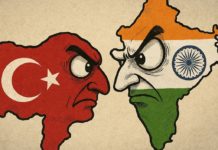








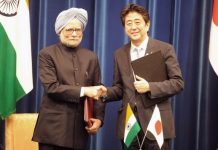













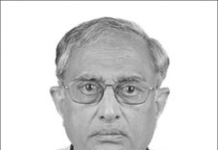



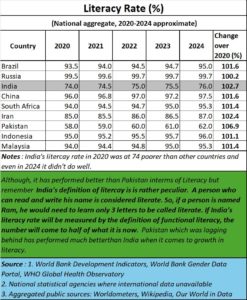
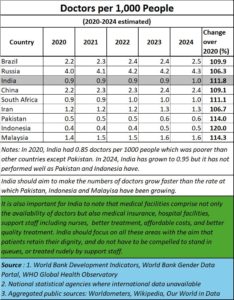
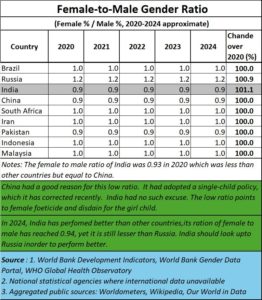







COMMENTS